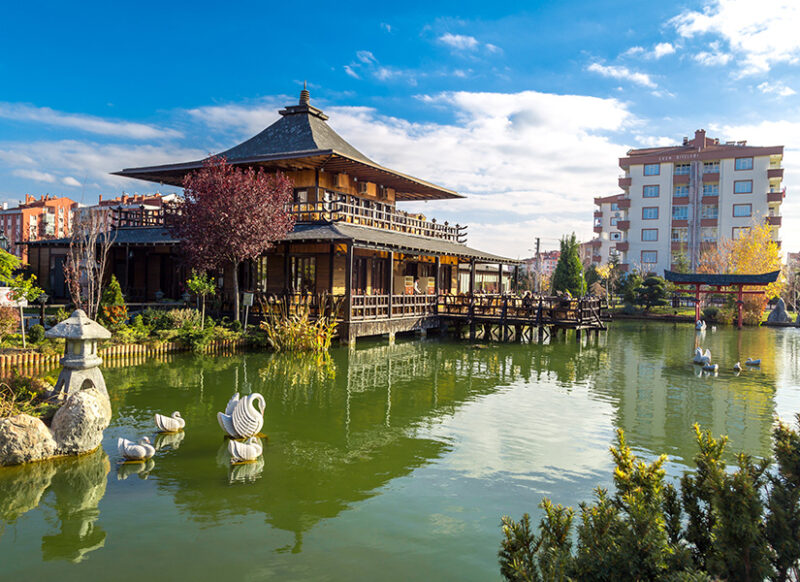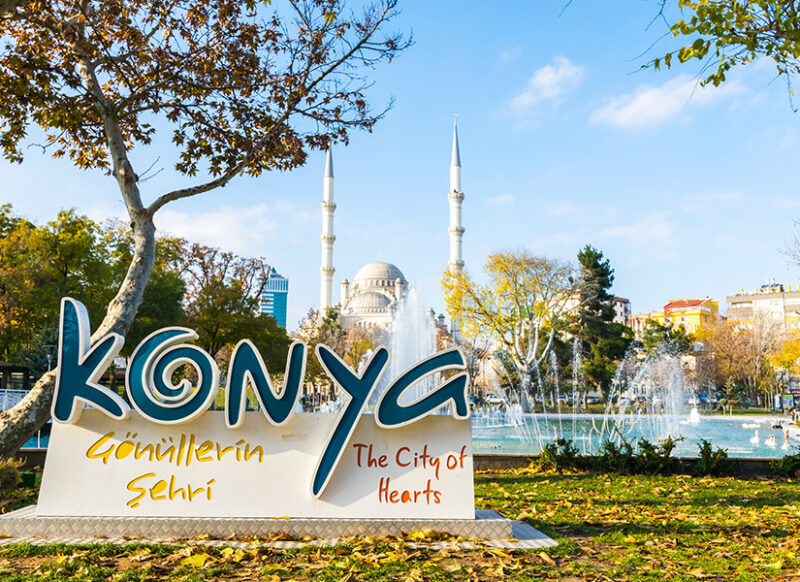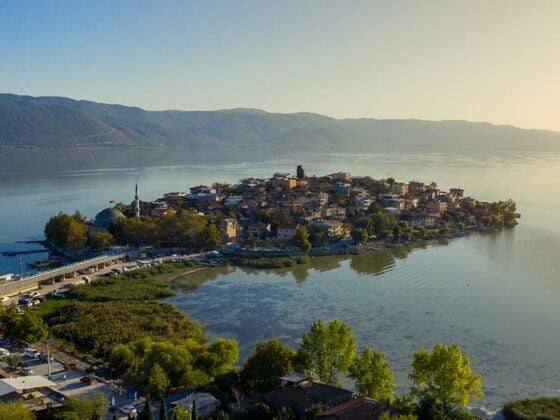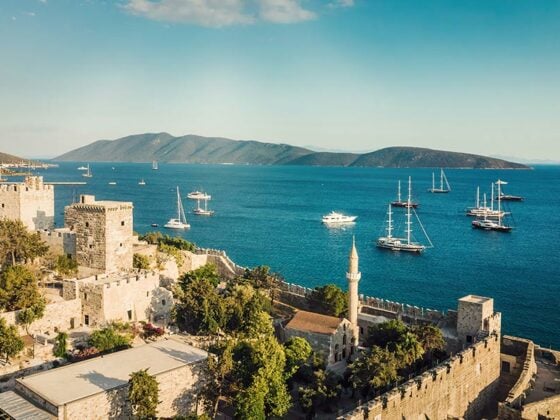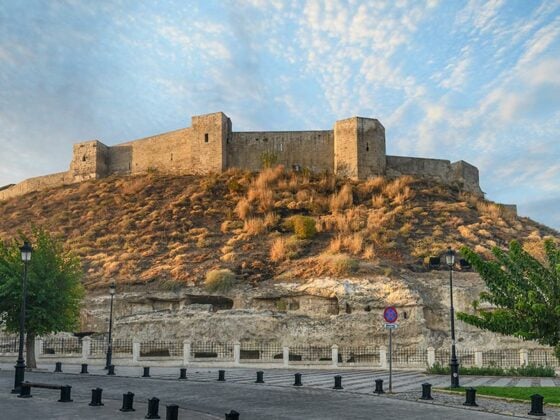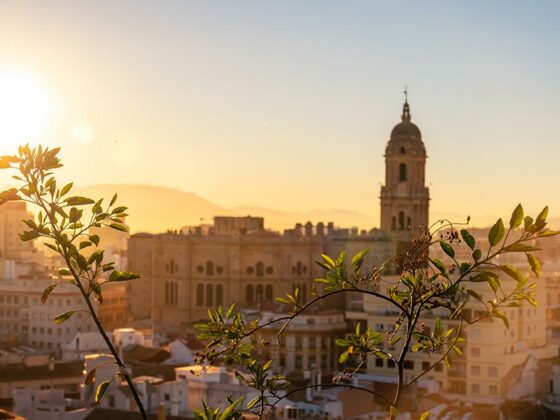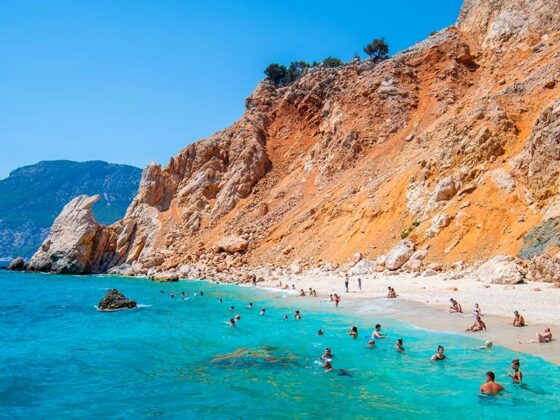Konya, Turkey’s largest city by area, has a richness that makes the best of this feature. While the natural beauties of the city center and its districts enchant the visitors, its historical texture also fascinates. We are going on an outstanding tour through the charming atmosphere of Konya, which is one of the best routes for cultural tourism.
1. Mevlânâ Museum
Mevlana Lodge, which is open to visitors as a museum today, was the rose garden of the Seljuk Palace before it became a lodge. It was gifted by Sultan Alaeddin Keykubad to Mevlana’s father, Sultanü’l-Ulema Bahaeddin Veled, and a lodge was established here over time.
Mevlânâ Celaleddin Rumi’s philosophy of life, based on knowledge, tolerance and love, has influenced the whole world for hundreds of years and still maintains this effect. The museum, which welcomes its visitors in accordance with this philosophy, has an impressive atmosphere. In the museum that also stands out with its architecture, the name of the building which draws attention at first glance is kubbe-i Harra, known as the Green Dome. In the Green Dome, you can see the oldest copy of Mevlânâ’s greatest work, the Masnavi, valuable manuscripts, items unique to the lodge, patience stones, and an example of an eight-stringed violin, known as the forerunner of today’s violin instrument. Mevlana’s tomb is also in this mausoleum. Şemsi Tebrizi Mosque and Tomb, Semahane, Mevlânâ’s Sarcophagus and different tombs from the Seljuk period are among the important spots to visit in the museum.
The museum, which is very well preserved due to its historical place in Turkish and Islamic culture, is one of the most visited places today. Entrance to the museum is free of charge.
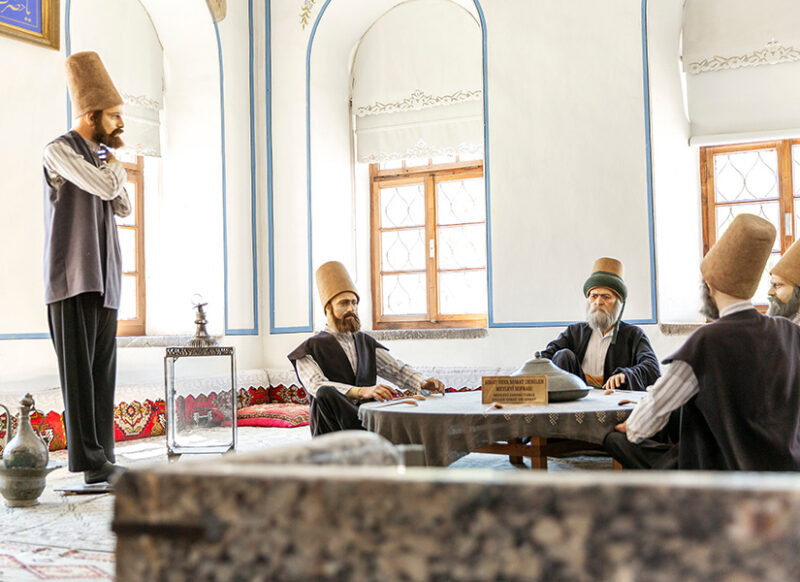
2. Karatay Madrasa
Karatay Madrasa, which is located 1.5 km to Mevlana Museum, can be reached in 15 minutes on foot. It is estimated that the architect of the madrasa, which was ordered to be built by Emir Celaleddin Karatay in 1251, was Muhammed bin Havlan. The building was built of ‘’Sille’’ stone. This important center, which coincides with the reign of Kaykaus II, is open to visitors as Konya Tile Works Museum today. On the magnificent door at the entrance, the inscriptions about the construction of the madrasa are embroidered in relief.
In the Karatay Madrasa, which reflects the tile workmanship of the Anatolian Seljuk period in the best way, ceramics and tiles, plaster ornaments, Kubad-Âbâd Palace tiles and oil lamps from the Seljuk, Beyliks and Ottoman periods are exhibited.
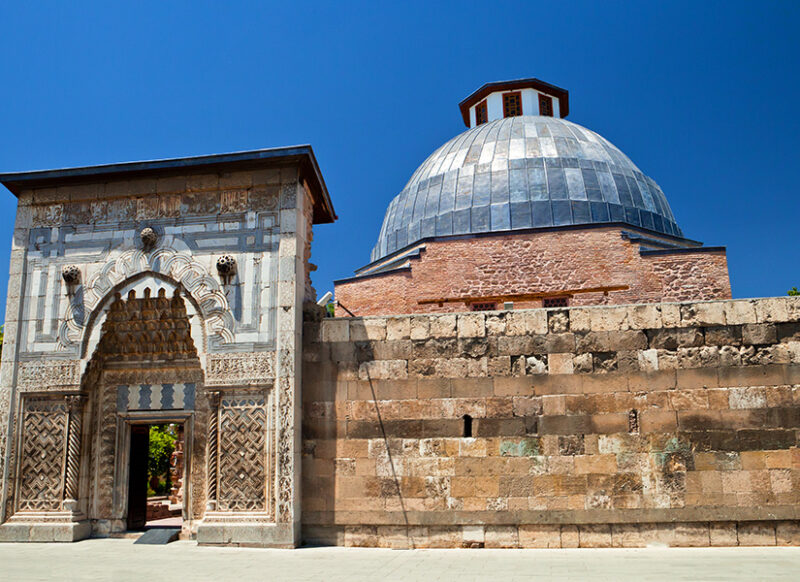
3. Fine Minaret Museum
Fine Minaret Museum or Fine Minaret Madrasa is at a point where you can walk 400 meters over Alaaddin Boulevard after visiting Karatay Madrasa. Completed in 1264, the madrasa is famous for its minaret made of tiles. It was opened in 1936 as the Museum of Stone and Wood Works after the renovation process.
It is possible to see the most beautiful examples of the double-headed eagle figure, one of the most well-known symbols of the Seljuks. Inscriptions from the Karamanoğlu and Seljuk periods, wooden doors made with carving techniques, sarcophagi and reliefs are among the works that can be seen in the museum.
You can use your museum card at the entrance of the historical museum, which is open to visitors every day.
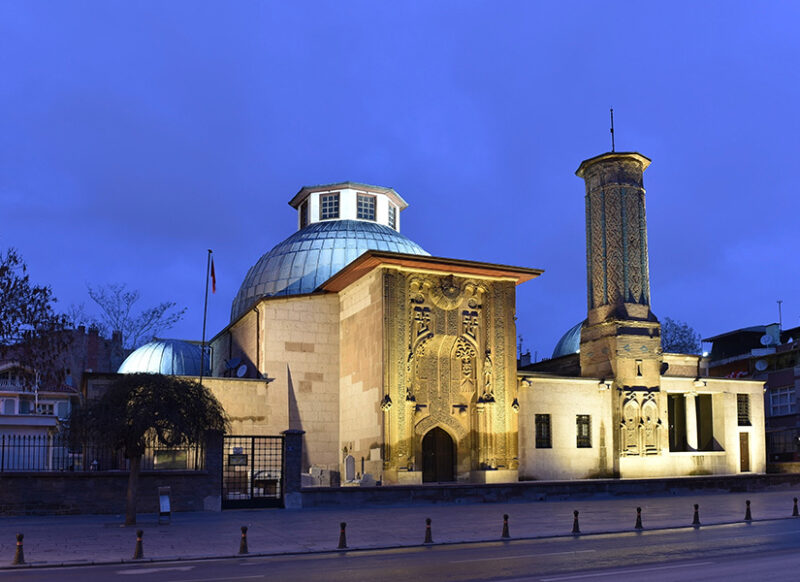
4. Aziziye Mosque
Aziziye Mosque, one of the magnificent examples of late Ottoman architecture, was built by Sheikh Ahmed between 1671 and 1676. Due to the loss of the first structure in the fire, the current state of the mosque was built in 1867 in the name of Pertevniyal Valide Sultan, the mother of Sultan Abdülaziz. The mosque, which arouses admiration with its architecture, was built in the Turkish baroque style. Its windows, which are larger than its doors, and its two minarets, which are covered with a dome, are quite remarkable.
Aziziye Mosque, which is 500 meters away from the Mevlana Museum, is a beautiful building you can stop by after your museum tour.
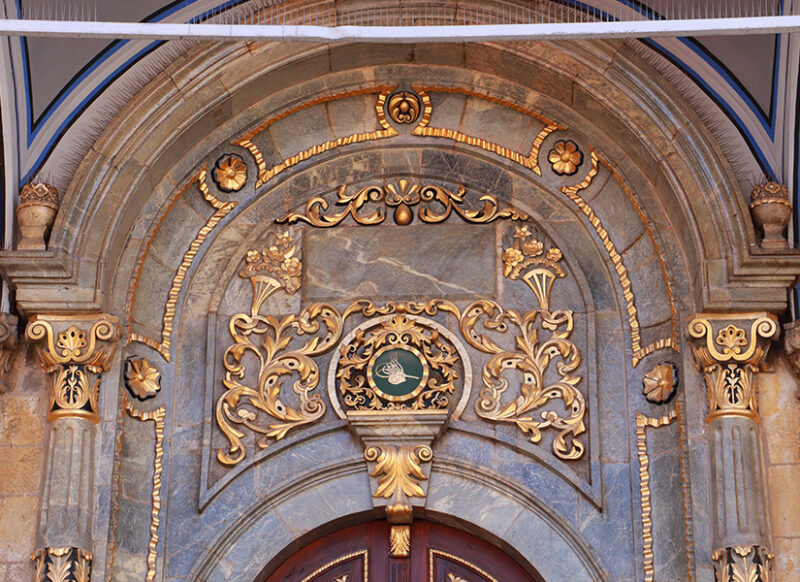
5. Sille
Sille, the village of Konya with a history of 5000 years, is a unique settlement 10 km away from the city center. The moment you come here, you instantly feel its different atmosphere. Most of the hills surrounding the village are made of tuff. In the Byzantine period, chapels were built by carving the hills. The quarries, which have been used for centuries, are still one of the most important areas around the village today. The stones extracted from here are also known as Sille stone and were used in the architecture of many buildings.
Ancient architectural traces seen in the beautiful stone houses of the village, where Phrygian finds of the 7th century BC were found, also give clues about the history of this place. Places such as Hagia Eleni Church, Time Museum, Sille City Museum, Sille Bath are among the most beautiful structures you can visit here.
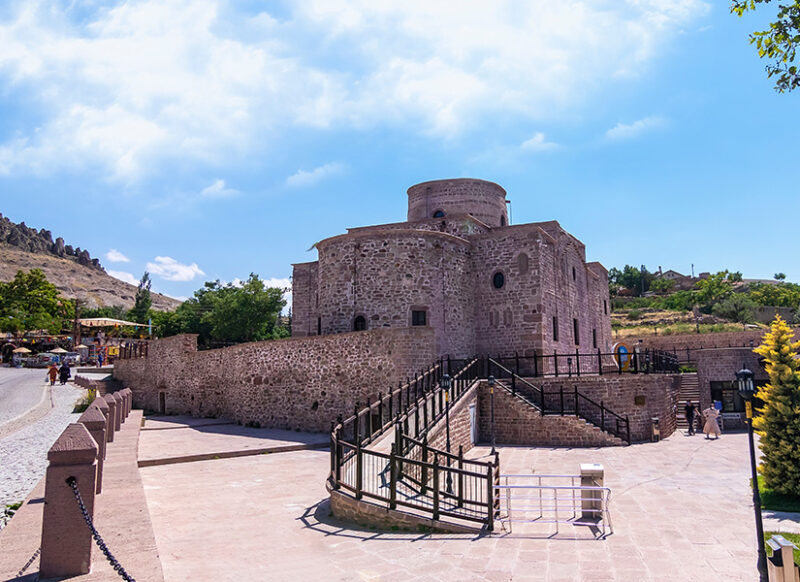
6. Çatalhöyük Neolithic Ancient City
If you’re ready for a journey into the prehistoric era, we’re heading a little further out of the city. Located in Çumra, Çatalhöyük is 45 km away from the center of Konya. The area, which is a Neolithic and Chalcolithic Age settlement, is definitely a point worth seeing. The East Mound of the ancient city, which consists of two mounds, consists of 18 settlement layers. There are many ruins here that tell of the transition to social and settled life. On the West Mound, cultural reflections of the Chalcolithic period can be observed. The ancient city, which contains the most obvious evidence of the transition to urban life in its geography, is an important value not only for the Konya environment, but also for the history of humanity.
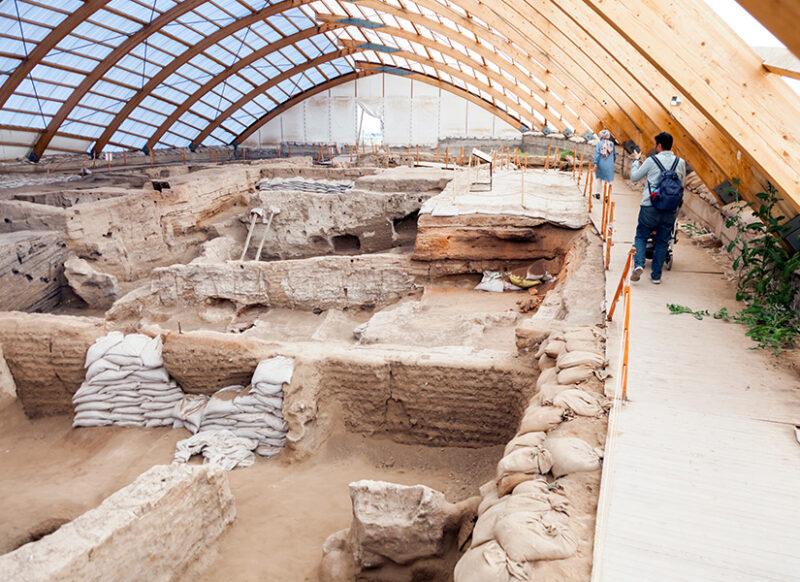
7. Kyoto Japanese Park
Kyoto Japanese Park, Konya’s best-known theme park, is Turkey’s largest Japanese garden. Geese and swans glide calmly in the artificial lake in the park, which is arranged according to Japanese culture. The Japanese house placed on the lake serves as a restaurant. If you come across the sakura trees, known as the Japanese cherry blossom, the taste of walking here is different. Kyoto Japanese Park is one of the cultural spots you must see in the central part of the city.
